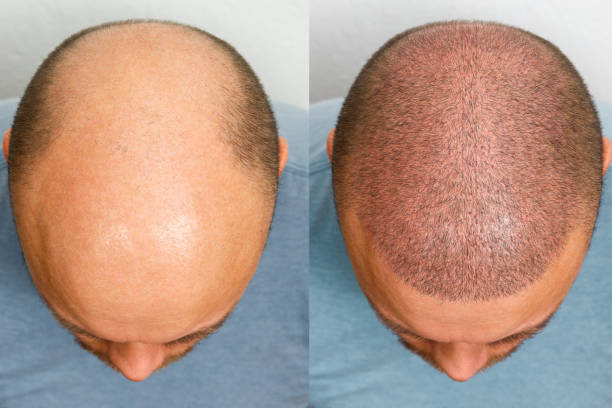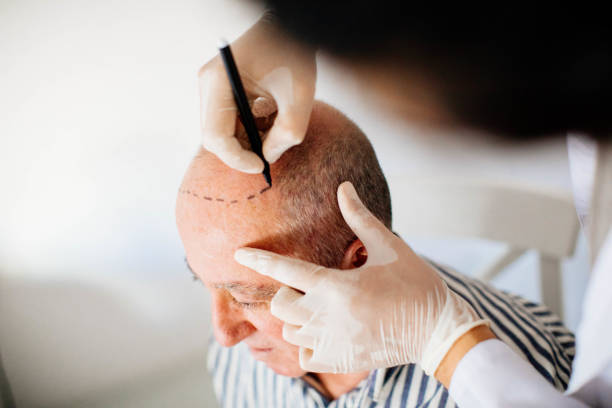The advantages and dangers of hair transplantation at a glance. In men, a bald head or thinning hair is usually no reason to be happy. For women, the mere thought of suffering from this problem is pure horror.
Hair loss: not just a male problem
Especially if you suffer from thin hair or are struggling with hair fall and hair loss, you should maybe consider a hair transplant.
For many people, full hair and lush volume are directly related to femininity and thus also to attractiveness. Hair loss is caused by the decreasing density of the hair follicles. This leads to hair loss as hair grows from the healthy follicles.
Hair loss after menopause

In women, this phenomenon occurs mainly after menopause. This is due to the resulting hormonal changes. However, the patterns of hair loss differ significantly depending on the gender of the person affected. While men usually develop a receding hairline and a bald spot on the back of their heads, women almost always suffer from the fact that their hair is becoming increasingly thin and therefore lighter. A skin transplant appears as real salvation in an emergency.
The process of a hair transplant
In contrast to the “miracle cures” from the local drugstore, a hair transplant has a decisive advantage. Normally it really does something. If you previously had problems with thinning and sparse hair, you probably won’t have it anymore. Of course, there are also risks with such an intervention, so these are discussed below.
Hair transplantation allows you to have hair follicles transplanted to the desired areas. From these, the new hair will grow in the future. Light spots where the scalp could shimmer through are now a thing of the past.
Removal of the hair follicles
Of course, the follicles transplanted for this purpose have to come from somewhere. The patient donates them to himself during a hair transplant. They come from a part of the head where the hair density is even higher. It is therefore a basic requirement that the patient still has hair. A hair transplant would therefore no longer be possible with a completely bald head.
These donor follicles are usually removed from the back of the head since hair loss is usually less here. The doctor treating you cuts them off along with the scalp. What sounds quite brutal at first is of course carried out under local anesthesia and is therefore almost completely painless. The resulting wound is then sewn up by the surgeon. It will therefore no longer be visually noticeable later on.
Dissection and use of the grafts
The surgeon can now cut the removed piece into smaller strips of skin. These are called grafts, which contain up to five hair follicles. Holes are then punched into the scalp at the light spots. Here the follicles can now be inserted and grow together with the scalp. This procedure not only sounds complicated, but it is also. It, therefore, takes several hours, depending on the patient. After about two to three months, hair will begin to grow out of the hair follicles.
Risks and dangers of hair transplantation
If you are now considering perhaps having such a treatment carried out yourself, then of course you must also be informed about the possible risks and dangers of such an operation.
Success cannot be guaranteed
There is no guaranteed success. Every person is different and it can happen that some people’s newly transplanted hair follicles do not grow together as well as others. This can result in bald spots because the hair follicles are shed.
Scars and wound healing problems
Significant scarring can also occur. This usually occurs at the site where the skin containing the follicles was originally removed. These scars can then become visible. As with any other operation, wound healing disorders can also occur at this point. Infection and bleeding cannot be ruled out either.

No elimination of the cause
It should also be mentioned that the newly transplanted hair follicles can also fall out. In the end, the cause of the hair loss was not treated. After all, a hair transplant is not a medical but a plastic procedure.
The first examination by a dermatologist
However, if you are undeterred by the risks and dangers of hair transplantation, you can seek an individual consultation with a dermatologist. He can address your personal problem areas and give you professional advice. During this examination, the dermatologist will also try to find the cause of your problem. In addition to the hormonal changes after menopause, diseases can also cause hair loss. It is also important that the doctors check how dense the remaining hair is.
Hair transplant cost
Of course, such a plastic procedure is not particularly inexpensive. The number of transplants required determines the price. Whereby at least about 2000 euros should be expected.
